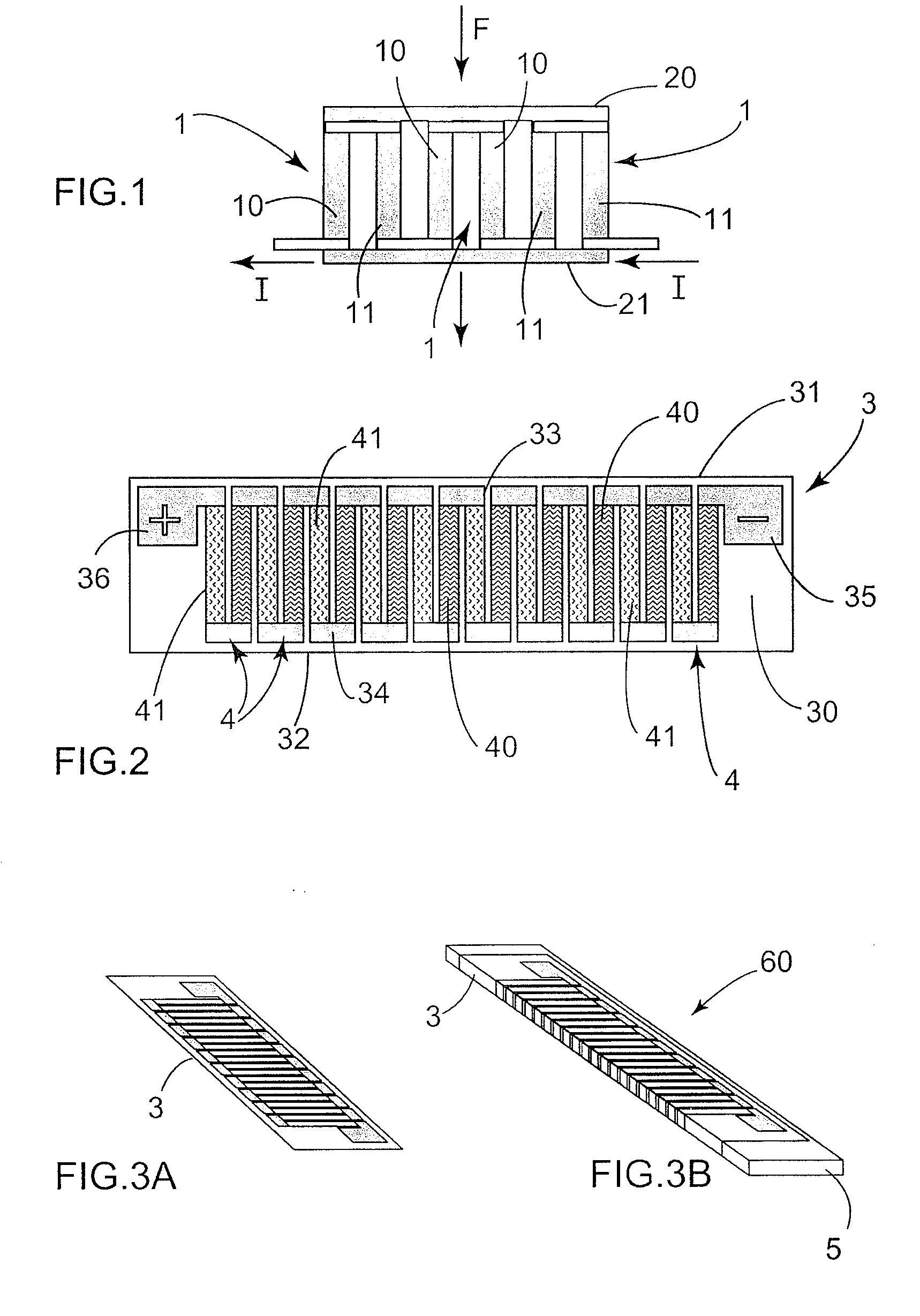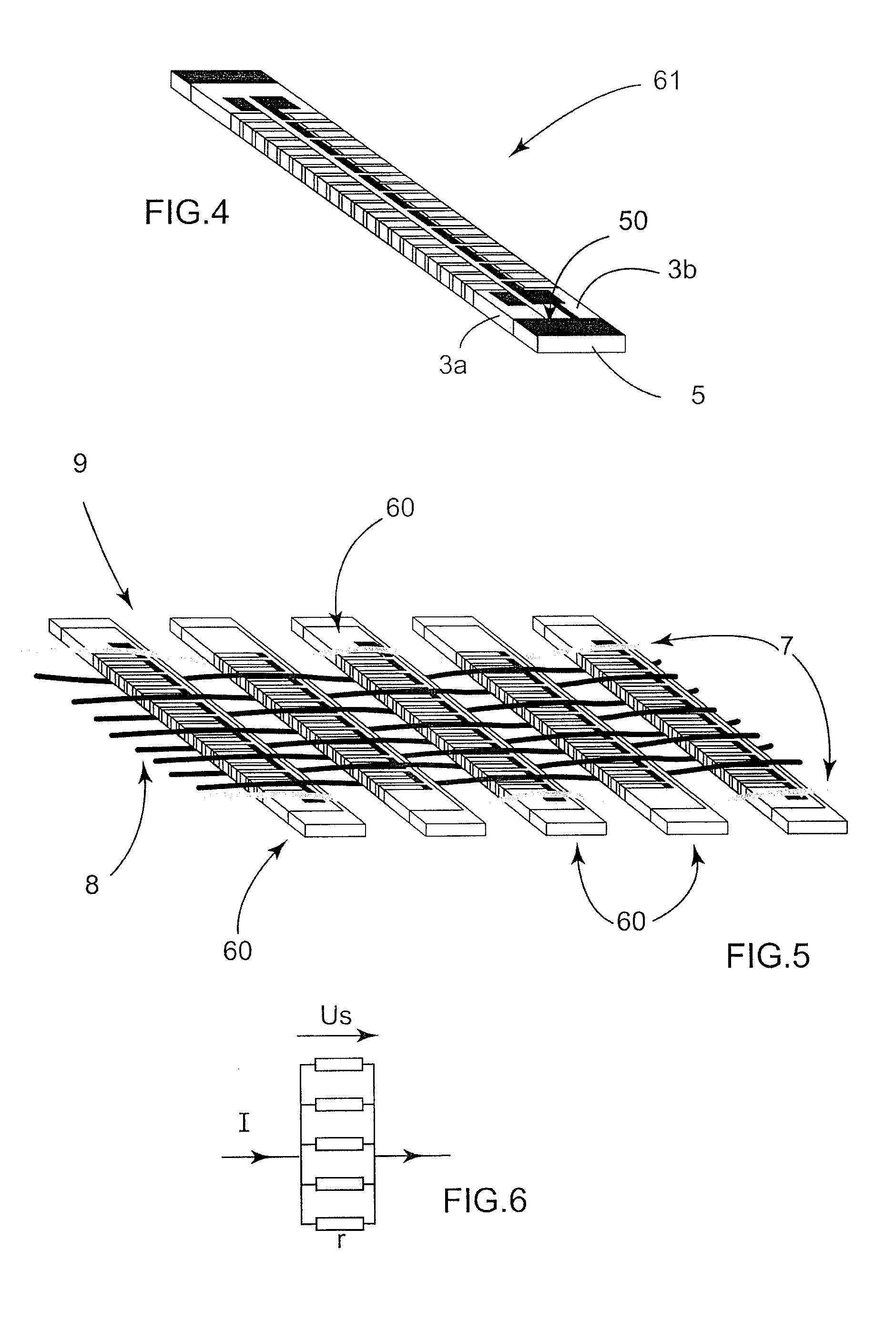Thermoelectric means and fabric-type structure incorporating such a means
a fabric-type structure and thermoelectric means technology, applied in the direction of thermoelectric devices with peltier/seeback effect, thermoelectric device junction materials, electrical apparatus, etc., can solve the problems of not being completely self-sufficient, limiting the type of materials that can be used, and not being able to exploit all the heat emitted by the human body, so as to achieve the effect of easy optimization of the thermoelectric performance of the structur
- Summary
- Abstract
- Description
- Claims
- Application Information
AI Technical Summary
Benefits of technology
Problems solved by technology
Method used
Image
Examples
Embodiment Construction
[0046]Referring firstly to FIG. 1, this illustrates a thermoelectric converter consisting here of three pairs 1 of electrically connected conductors. Each pair comprises two electrical conductors 10, 11 of different nature.
[0047]As illustrated in FIG. 1, the two conductors 10, 11 of a given pair 1 are electrically connected in series, the pairs 1 also being electrically connected in series. The current flowing within the converter is indicated schematically by I.
[0048]Finally, the pairs of conductors are thermally connected in parallel. In the example illustrated in FIG. 1, a temperature difference exists between the hot face 20 and the cold face 21 of the thermoelectric converter, through which a heat flux illustrated by the arrow F flows.
[0049]The efficiency of such a converter is directly proportional to the temperature difference applied between the two faces of the converter.
[0050]Referring now to FIG. 2, this illustrates the first step in the manufacture of a thermoelectric me...
PUM
 Login to View More
Login to View More Abstract
Description
Claims
Application Information
 Login to View More
Login to View More - R&D
- Intellectual Property
- Life Sciences
- Materials
- Tech Scout
- Unparalleled Data Quality
- Higher Quality Content
- 60% Fewer Hallucinations
Browse by: Latest US Patents, China's latest patents, Technical Efficacy Thesaurus, Application Domain, Technology Topic, Popular Technical Reports.
© 2025 PatSnap. All rights reserved.Legal|Privacy policy|Modern Slavery Act Transparency Statement|Sitemap|About US| Contact US: help@patsnap.com



